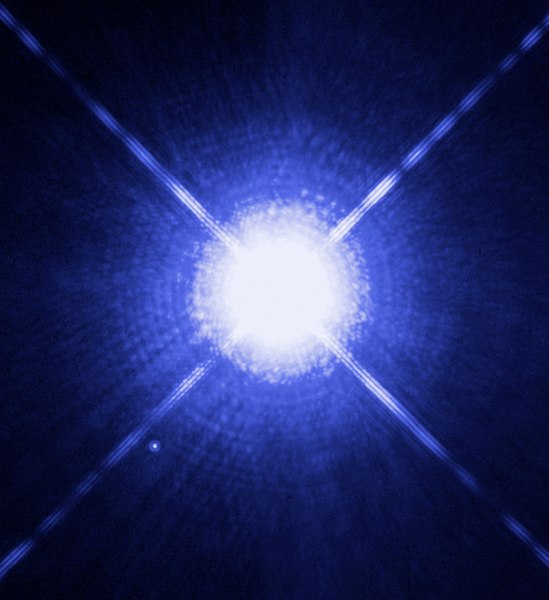In astronomy, a light curve is a graph of the light intensity of a celestial object or region as a function of time, typically with the magnitude of light received on the y-axis and with time on the x-axis. The light is usually in a particular frequency interval or band.
Light curve of δ Cephei showing magnitude versus pulsation phase
A binary star or binary star system is a system of two stars that are gravitationally bound to and in orbit around each other. Binary stars in the night sky that are seen as a single object to the naked eye are often resolved using a telescope as separate stars, in which case they are called visual binaries. Many visual binaries have long orbital periods of several centuries or millennia and therefore have orbits which are uncertain or poorly known. They may also be detected by indirect techniques, such as spectroscopy or astrometry. If a binary star happens to orbit in a plane along our line of sight, its components will eclipse and transit each other; these pairs are called eclipsing binaries, or, together with other binaries that change brightness as they orbit, photometric binaries.
The well-known binary star Sirius, seen here in a Hubble photograph from 2005, with Sirius A in the center, and white dwarf, Sirius B, to the left bottom from it
Edge-on disc of gas and dust present around the binary star system HD 106906
Artist's conception of a cataclysmic variable system
Artist's impression of the binary star system AR Scorpii





